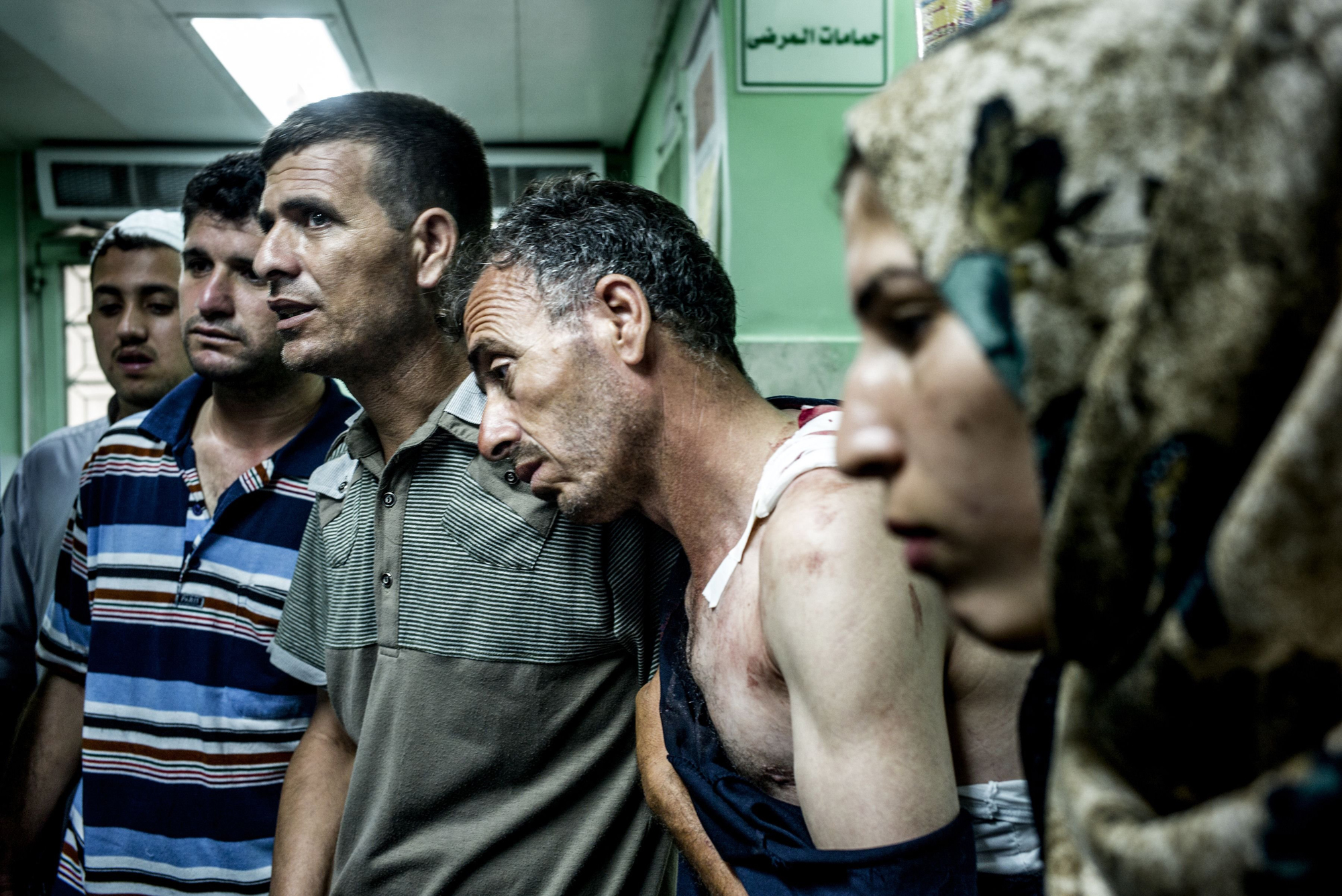
Seventeen times, officials from the U.N. called their contacts in the Israeli army to give them the exact GPS coordinates of a U.N. school in the Jabalya Refugee Camp. “There was fighting very close by and the staff there was very alarmed,” Christopher Gunness, the spokesman of the U.N. Relief and Works Agency (UNRWA), which works with Palestinian refugees, tells TIME. “We told them what the precise coordinates were.”
Despite the worried calls, the Jabalya Elementary Girls School was hit just after the early morning call to prayer Wednesday, when most of the 3,000 people taking shelter there were asleep. A few minutes later, the school was hit by a second explosion, in which a shell or a rocket crashed through the roof of the building. Fifteen people were killed and more than 100 injured.
However it happened, the devastating attack of the U.N. school seems such an egregious example of killing innocent civilians that it could be a turning point in the three-week-old war between Israel and Hamas that senior U.S., European and Middle Eastern officials have so far failed to halt. Strong condemnations have come in from U.N. Secretary-General Ban Ki-moon, who called the strike “unjustifiable,” as well as from the White House. It is the second time over the past several days that a U.N. school has been hit, and the sixth such incident since the war began.
The refugees at Jabalya “are people who were told to leave their homes by the IDF,” Gunness says. As a result, there are 200,000 Gazans around the Strip living in 85 shelters, leaving UNRWA and other aid agencies struggling to provide for their most basic needs. That includes water, which is trucked in because most of the tap water in Gaza is undrinkable even during peacetime. “We can’t offer safe sanctuary. We ask people to respect the inviolability of our offices.” Earlier in the day, Gunness tweeted: “UNRWA condemns in the strongest possible terms this serious violation of international law by Israeli forces.”
Israeli forces, however, have not taken responsibility for the attack on the school. As it did after fiery destruction of a power plant a day earlier, which seemed to indicate Israel was not just striking military targets but also the kind of basic civilian infrastructure that could permanently affect the more than 1.8 million residents of the Gaza Strip, the IDF said it was checking the incident and could not confirm who had hit the school.
“We don’t target U.N. facilities in any way, shape or form,” Lieut. Colonel Peter Lerner tells TIME. He describes the IDF’s version of events: “In the early hours of the morning, there was mortar fire launched from the vicinity of the school and there was an exchange of fire there. In the aftermath of that, there was a report of deaths in the school. We are reviewing this incident.”
Lerner says that in the past few days, there have been “several attempts by Hamas to pin on Israel launches from the Gaza Strip” that didn’t go as planned, landing on civilians instead of in Israel. “There are two cases in which we are aware of — the Beach Camp [Shati] and the attack on Shifa Hospital — which were the result of rockets that were definitely launched in Gaza.” As for UNRWA’s 17 distressed calls to the Israeli army, Lerner said that the location of the U.N. schools was not the issue. “We know where their schools are, as well as shelters and warehouses, and we have an ongoing relationship with their offices in Gaza to facilitate their humanitarian work on the ground. In fact, the humanitarian cease-fire today was to enable their ongoing activities.”
That cease-fire — though a four-hour lull or pause would be a more precise description — was declared by Israel in part because of U.N. requests, ostensibly to allow emergency workers to go out into the field and to remove bodies from the ruins. Hamas, for its part, has refused to participate in any cease-fires unilaterally declared by Israel, and continued launching several rockets even during the cease-fire, adding to the more than 2,670 that have been fired since July 7. During this so-called lull, Israeli warplanes struck a crowded market in Shujaiyeh, killing 15 people. Shujaiyeh, an area in the eastern part of Gaza City, has witnessed the heaviest bombardment by the IDF since it began its ground operation, with many of the buildings reduced to ruins.
At the Kamal Odwan Hospital in northern Gaza Strip, Said Sulaiman sits over the bed of his son Rezeq, who was seriously wounded by shrapnel at the U.N. School in Jabalya. As instructed by the Israeli army, two weeks ago they decided to flee their house in Atattra, near Beit Lahia — an agricultural area that in the past has been used by Hamas and other militants for launching rockets — and came to seek shelter at the U.N. school.
“I came to the school in search of a safe place. My family is still in the school while I am here, and I hope no strikes will happen while I am away,” says Sulaiman, 55. “We are waiting here in the room until the operation room is ready to take him into surgery. I hope they won’t have to amputate his leg. I just want to return to my house with my family safe after the withdrawal of Israeli troops from Gaza, and for the aggression to stop.”
A more lasting cease-fire still seems elusive, however. Israeli Prime Minister Benjamin Netanyahu’s security cabinet agreed Wednesday night to intensify attacks on Hamas targets in Gaza and to keep destroying tunnels. The night before, Mohammed Deif, the head of al-Qassam Brigades, the military wing of Hamas, said that only Israel lifting its blockade of Gaza would be enough for the militant group to agree to a cease-fire.
A Hamas-made video released on the same night, showing militants infiltrating Israel via a tunnel, successfully ambushing and killing five Israeli soldiers near Nahal Oz, has only confirmed for the government that the tunnels still pose a danger, encouraging the government to continue the fight. A poll released Tuesday found that 90% of Israeli Jews think the IDF operation in Gaza is justified. The survey, conducted by the Israel Democracy Institute, indicated that most expected the war to continue.
The Palestinian Ministry of Healthy put the death toll Wednesday at 1,361; Israel has lost 58 soldiers and three civilians. Israeli officials blame Hamas for many of the civilian deaths, repeatedly accusing the militant group of shooting from within populated areas, including residential buildings and hospital. Netanyahu himself has charged Hamas with regularly using human shields, purposefully putting people in harm’s way. That means Israel’s soldiers and pilots have to either have to retreat from their targets or shoot anyway, knowing that civilians will be killed in the process.
Gunness counters that on three occasions, including one this week, rocket caches have been discovered in U.N. schools, but noted that these were empty, out-of-use structures undergoing maintenance — not buildings housing refugees.
“On these separate occasions, [rockets] were found in schools that have been closed for the summer and which were being inspected by UNRWA,” Gunness says. “We condemned the groups that put them there as a flagrant violation of the sanctity and neutrality of the U.N., we immediately notified all relevant parties, and we have never handed them over to Hamas.” The dispute over who hit the U.N. school continues, but the day’s grim images make one fact indisputable: there are no safe havens in Gaza.
— With reporting by Hazem Balousha / Gaza City
15 Killed in Gaza Market Airstrike As Temporary Cease-Fire Passes
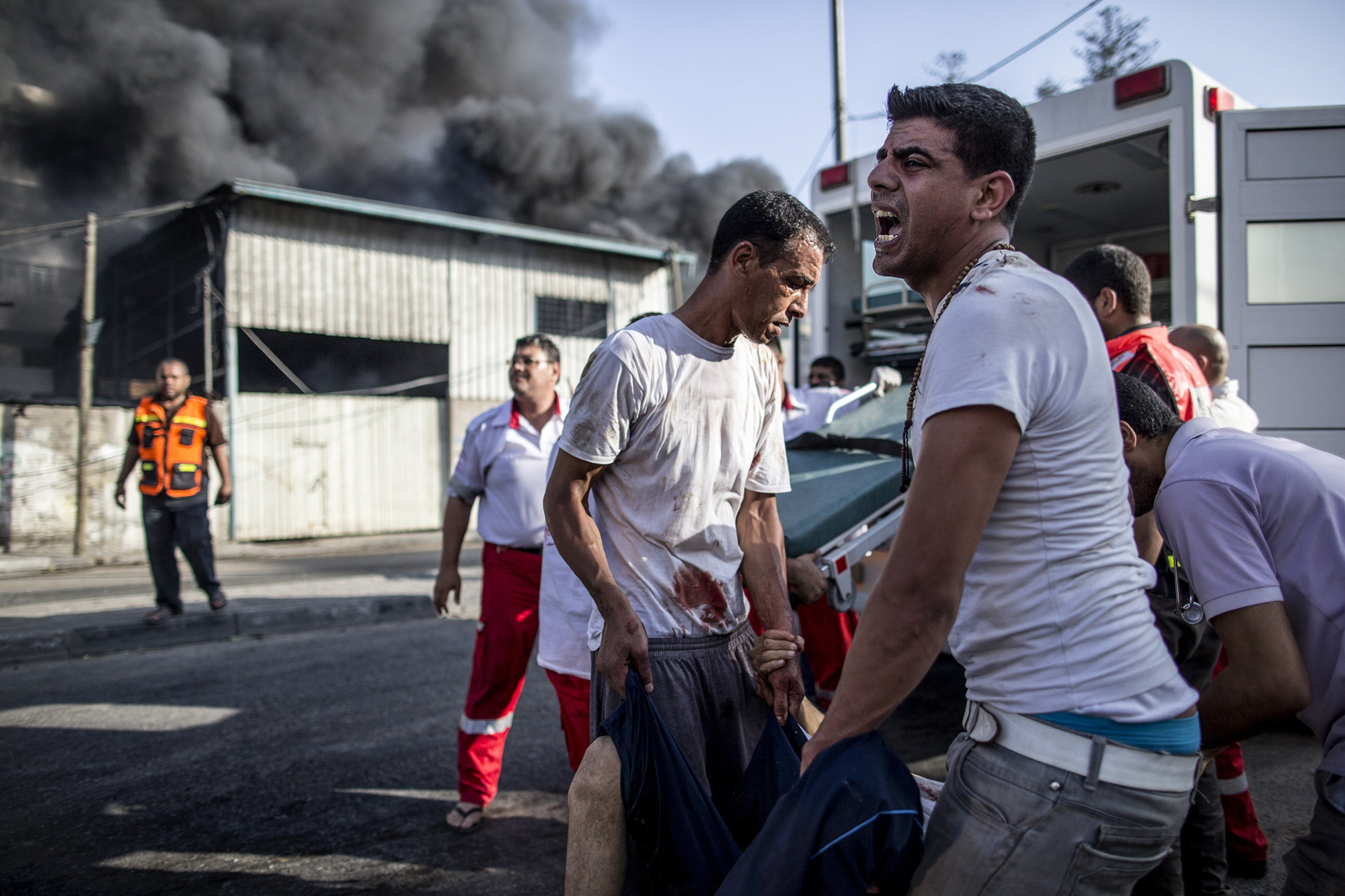


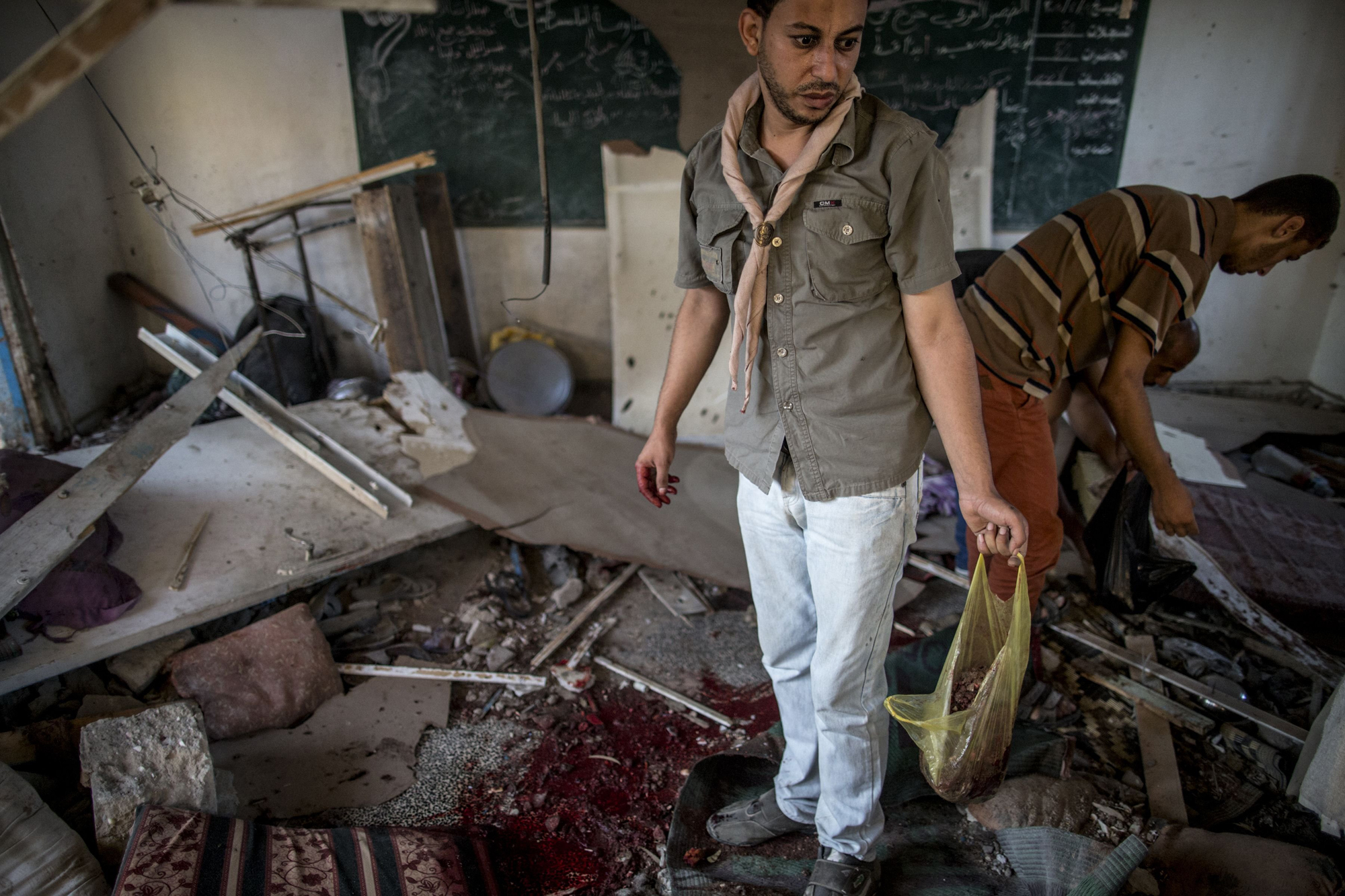

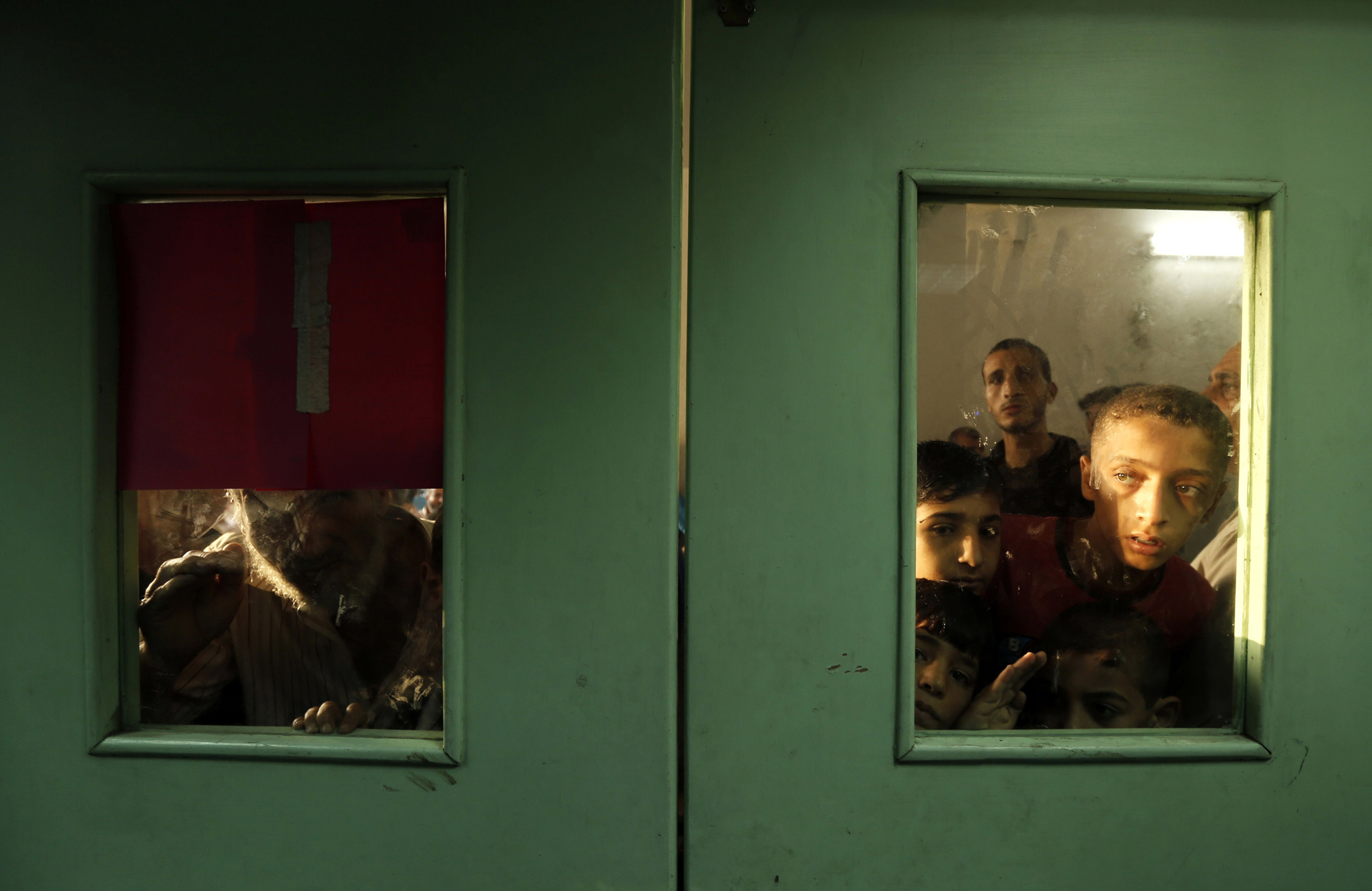

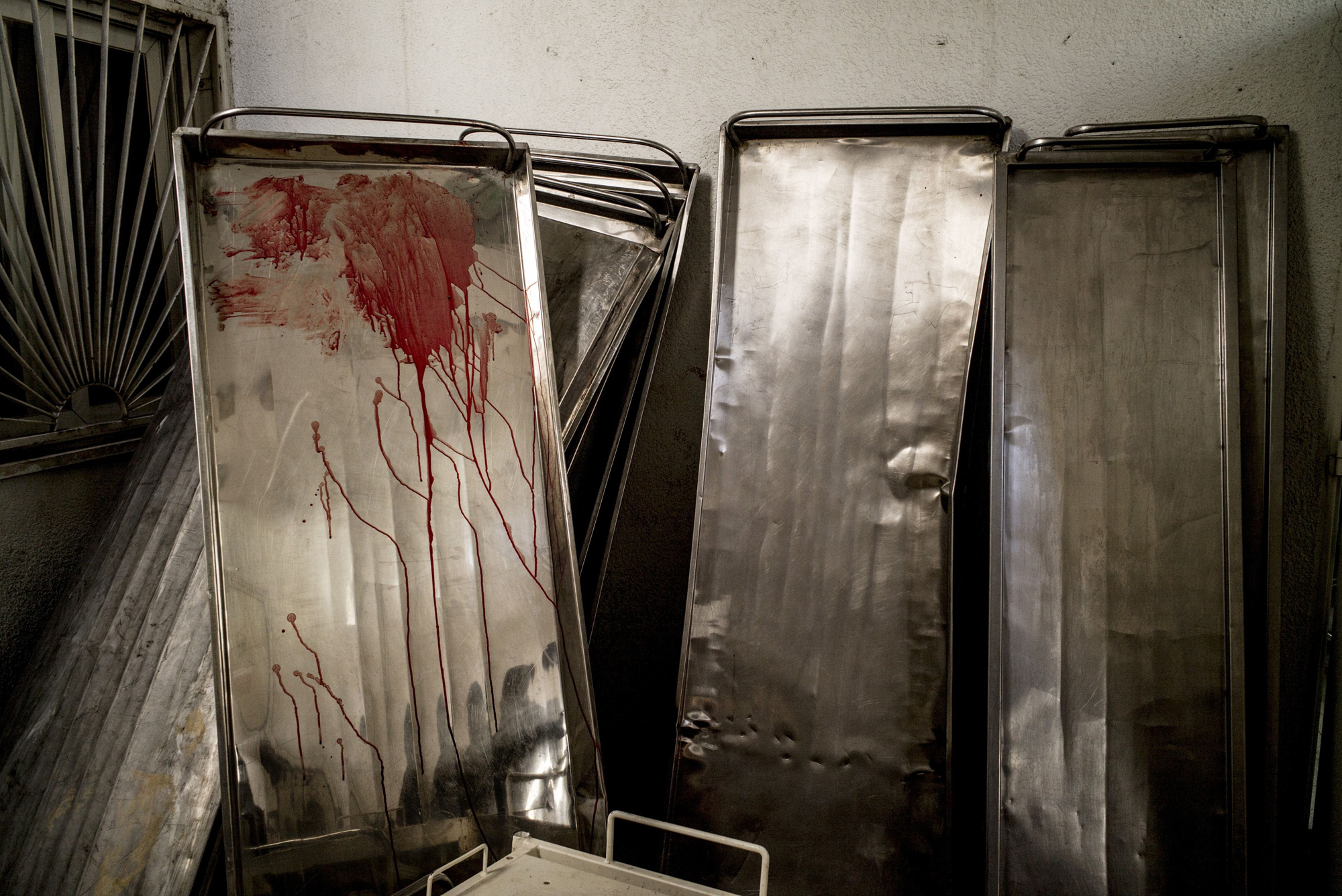


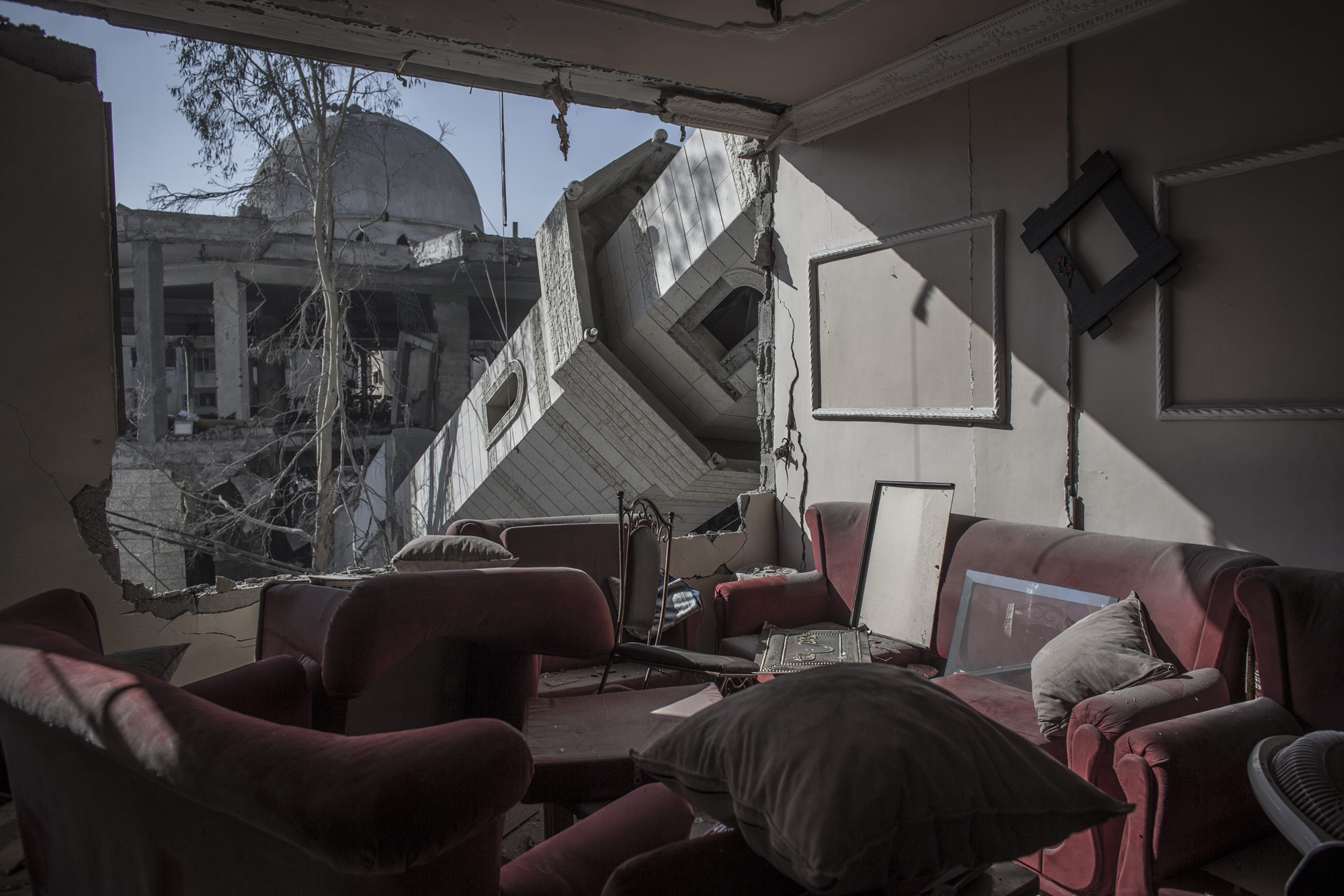
More Must-Reads from TIME
- Inside Elon Musk’s War on Washington
- Meet the 2025 Women of the Year
- The Harsh Truth About Disability Inclusion
- Why Do More Young Adults Have Cancer?
- Colman Domingo Leads With Radical Love
- How to Get Better at Doing Things Alone
- Cecily Strong on Goober the Clown
- Column: The Rise of America’s Broligarchy
Contact us at letters@time.com